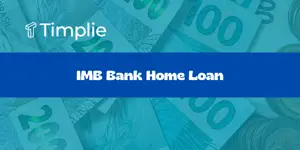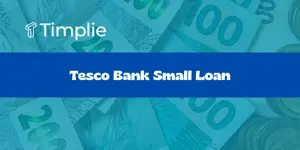Every year, millions of Americans grapple with the burden of educational debt. Federal student loans can affect career choices, family planning, and financial stability. The good news is that a range of debt relief solutions exists to help borrowers breathe easier.
From teachers in underserved schools to public servants protecting communities, forgiveness programs can completely erase remaining balances under specific conditions. Understanding the nuances is the first step to taking control of your financial future.
Why Loan Forgiveness Matters
For many borrowers, student debt exceeds the value of their first home down payment, creating barriers to wealth accumulation. According to recent data, the average graduate carries over $30,000 in student debt, which can delay milestones like buying a house or starting a family.
Loan forgiveness programs represent more than a financial reprieve; they are a tool for social equity, enabling teachers to remain in underserved communities, public health workers to serve low-income populations, and veterans to transition into civilian roles without crippling debt. By redistributing fiscal relief, these initiatives foster a more inclusive economy.
What Is Loan Forgiveness?
Loan forgiveness refers to the partial or entire discharge of debt under government-sponsored programs. Unlike simple repayment options, forgiveness can eliminate what remains of your loan balance, often after meeting strict requirements.
These programs are designed to reward certain career paths or income-driven needs. Most apply exclusively to federal student loans, meaning borrowers of private education debt must seek alternative solutions or lender-specific relief programs.
Major Federal Loan Forgiveness Programs
There are four primary federal pathways to loan forgiveness in 2025. Each program targets a different group of borrowers, with unique service or repayment prerequisites.
Each of these programs requires proactive application through official channels. Borrowers must carefully document their service, payments, and any employer certifications to gain credit toward forgiveness.
PSLF offers a lifeline to public servants who spend a decade in roles like law enforcement, public health, or social work. By making 120 qualifying payments on an income-driven repayment plan, participants can see their remaining balance wiped out tax-free.
IDR forgiveness appeals to borrowers with fluctuating income. After 20–25 years of payments capped at a portion of discretionary income, any remaining debt is forgiven. This pathway ensures that monthly payments stay affordable even when earnings dip.
Teacher Loan Forgiveness enables educators in Title I and other low-income schools to apply for up to $17,500 in relief after five consecutive years of full-time service. This targeted support helps retain high-quality teachers in communities that need them most.
Perkins Loan Cancellation supports professionals such as nurses, law enforcement officers, and public defenders. Each year of qualifying service can eliminate a set percentage of the original Perkins loan balance, providing significant relief over time.
Eligibility Criteria and Application Process
Determining eligibility starts with loan type and current employment status. Federal Direct Loans are the cornerstone for most forgiveness options; private loans have limited avenues for discharge.
- Loan type: Must be a qualifying federal loan (e.g., Direct Loan, Perkins, FFEL after consolidation).
- Employment type: Government agencies, 501(c)(3) nonprofits, or specified public service roles.
- Repayment history: 120 qualifying payments for PSLF; 20–25 years of IDR payments for IDR forgiveness.
- Consolidation requirements: Some loans must be consolidated into Direct Loans to qualify.
- Income and family size: Determines monthly payment amounts under income-driven plans.
Once eligibility factors are clear, borrowers should submit the relevant forms to the U.S. Department of Education via StudentAid.gov or coordinate with their loan servicer. Maintaining precise documentation of pay stubs, employer certifications, and loan statements minimizes delays.
Be aware that periods of forbearance or deferment generally do not count toward qualifying payments. Instead, they pause accrual without contributing to the required 120-payment threshold. To preserve eligibility, consider enrolling in a reduced-payment income-driven plan rather than seeking hardship forbearances that may extend your repayment timeline.
Recent Policy Changes and Future Outlook
Recent reforms have temporarily made forgiveness under IDR plans tax-free through the end of 2025, a provision of the American Rescue Plan. In addition, the Department of Education is automating income verification and reducing paperwork burdens, thanks to improved data-sharing agreements with the IRS.
Some policymakers have advocated for scaling back broad-based forgiveness initiatives. Proposals under Project 2025 and recent executive orders signal potential limits on time-based or occupation-specific relief. While such changes have not yet taken effect, borrowers should track congressional discussions, as future modifications could alter program scopes or tax implications.
Practical Tips to Maximize Your Chances
- Verify your loan type by checking the National Student Loan Data System for accurate records.
- Annually recertify income promptly to avoid payment increases or loss of qualifying status.
- Submit PSLF forms on time each year, even if you haven’t reached 120 payments yet.
- Keep detailed records of employment certification letters and pay stubs for every qualifying year.
- Avoid default by enrolling in an IDR plan or seeking loan rehabilitation if payments become unmanageable.
Common Pitfalls and How to Avoid Them
Many borrowers discover too late that certain loans—like Parent PLUS or private education loans—do not qualify for PSLF without consolidation. Failing to consolidate early can waste years of potential credit toward forgiveness.
Another common misstep is missing annual updates. Even a one-month delay in recertifying income can restart the clock on qualifying payments. Set calendar reminders or automate income documentation to your loan servicer to prevent lapses.
Be wary of debt relief companies that charge upfront fees or demand power of attorney. The Department of Education or your loan servicer will never require a fee to process forgiveness applications. Always verify credentials and communicate through official channels to protect yourself from fraudulent schemes.
Where to Find Help and Resources
The U.S. Department of Education offers tools and support to guide borrowers through the forgiveness journey. The enhanced Loan Simulator helps forecast payment amounts under various plans, while the AI assistant “Aiden” provides instant answers to common questions.
Additional resources include:
- StudentAid.gov for official forms, program details, and eligibility checkers.
- Loan servicer assistance with expanded call center hours and dedicated PSLF teams.
- Financial aid offices at colleges or HR departments for employer certification forms.
Facing the weight of student debt can feel overwhelming, but with careful planning and proactive action, forgiveness is within reach. By understanding your options and staying organized, you can unlock significant relief and move toward a debt-free future.
References
- https://www.nerdwallet.com/article/loans/student-loans/student-loan-forgiveness
- https://www.nationaldebtrelief.com/blog/debt-guide/student-loan-debt/how-to-apply-for-student-loan-forgiveness-in-2025/
- https://www.cbsnews.com/news/how-to-qualify-for-student-loan-forgiveness-now/
- https://www.americanprogress.org/article/project-2025-would-increase-costs-block-debt-cancellation-for-student-loan-borrowers/
- https://www.ed.gov/about/news/press-release/us-department-of-education-begin-federal-student-loan-collections-other-actions-help-borrowers-get-back-repayment
- https://www.whitehouse.gov/presidential-actions/2025/03/restoring-public-service-loan-forgiveness/
- https://nelnet.studentaid.gov/content/forgivenessanddischarge
- https://studentaid.gov/announcements-events/idr-account-adjustment










